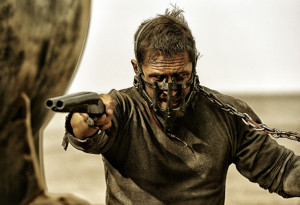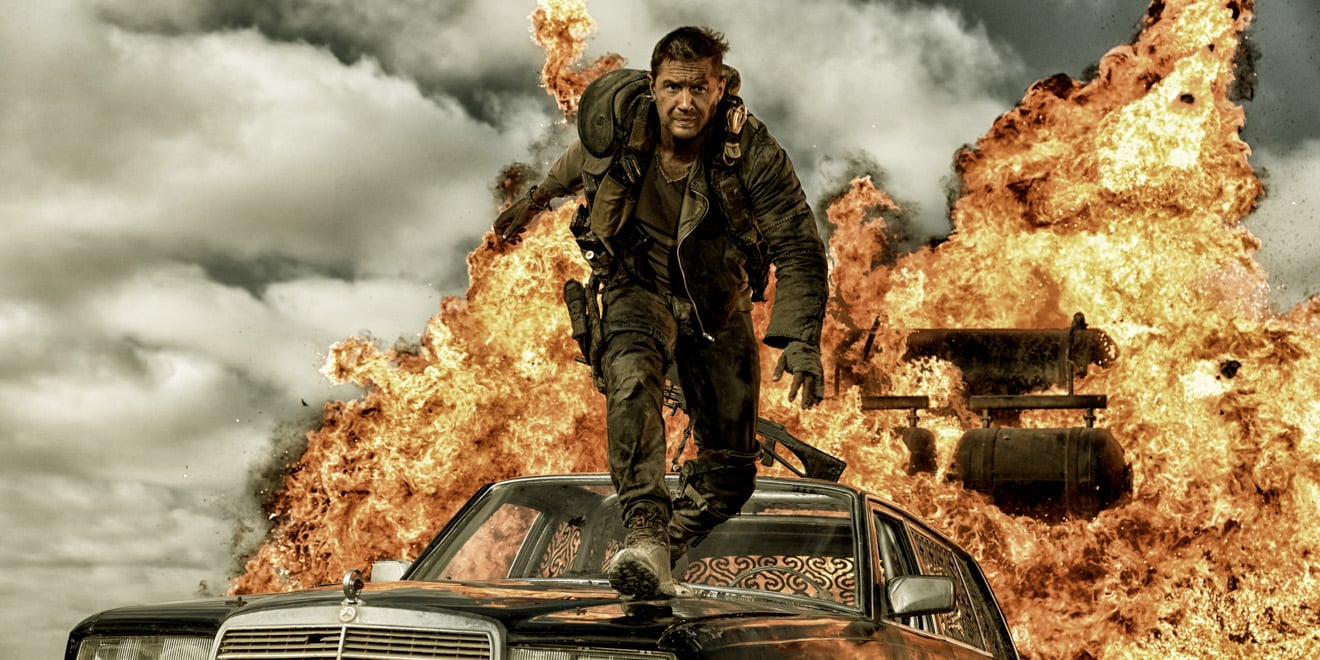“Mad Max: Fury Road” is insane. So far beyond the realm of the typical, the latest installment in George Miller’s post-apocalyptic series can only be described as the deranged work of a genuine madman. Transcending the absurdity of previous installments, Miller’s “Fury Road” turns the crazy up to eleven, and fabricates a sumptuous Eden, packed with snarling lunatics and forlorn ass-kickers. Miller may have jumped the shark with “Beyond Thunderdome,” but in “Fury Road,” the auteur of the preposterous finds his footing once more. Stunningly rendered and beautifully acted, this much-anticipated reboot is sure to satisfy fans and seduce the uninitiated.
Set amid the outback of dystopian Australia, “Fury Road” finds the eponymous Max Rockatansky (Tom Hardy), former highway patrolman and certified badass, alone and uncertain. Still sore about loss of his family, Max has little motivation in life save for an animalistic compulsion to survive. One evening while cruising the desert, Max is captured and forced into the custody of the War Boys, a squadron of pasty-faced henchmen in the employ of King Immortan Joe, the totalitarian ruler of the oasis-like Wasteland.
Eventually Max escapes with the aid of Imperator Furiosa (Charlize Theron), one of Joe’s lieutenants,

whose attempt to safely transport Joe’s harem of wives to “the green place” launches an all-out war on the roads of the Aussie desert. Little by little, Max then falls in with the skillful Furiosa and finds himself equally dedicated to the freedom of the once-enslaved brides, racing across the barren landscape to get the abused women to safety.
In all of this scrambling about, “Mad Max: Fury Road” becomes what is, in essence, a glorified car chase. Great in number — and fortune — the Wild Boys frequently engage with Furiosa and company, leading to high-octane skirmishes laced with fire and death. These encounters, though seemingly numerous, are so well executed that the simplicity of the narrative never grows tiresome. With a palette of burning oranges and the occasional melancholic blue, Miller’s Australia is a hyper-saturated dreamscape of astonishing splendor. Every moment is eye-catching, and, as the Wild Boys repeatedly fight to return the “property” of King Joe, “Fury Road” never fails to dazzle. For a film that relies so heavily on practical effects (in lieu of computer generated imagery), “Fury Road” is rife with the seemingly impossible: The camera moves untethered, incorporating itself into the action and inducing a rushing sense of urgency that is white-knuckle nerve-wracking.

Of course, as it to be expected of a film so dependent on the visual — Miller originally conceived of the film in storyboards — “Fury Road” is fairly light on dialogue and many of the actors struggle, if only temporarily, to acquaint themselves with conversing in grunts and squeals. Fortunately, Theron seems to have no difficulties with these limitations of performance and, with a viciousness and drive unmatched by any of the film’s other colorful characters (including Max), Theron’s Furiosa is an indubitable paragon. A steely blue glare that falters but a handful of times, a body that pulsates with power and vigor, a voice that quakes with both assurance and apprehension: Theron’s Furiosa easily holds her own beside cinematic ass-kickers like John McClane (“Die Hard”) and Ellen Ripley (“Alien”). Sure, Hardy’s Max is impressive but, the Imperator is, without a doubt, one of the most meticulously realized and thoroughly captivating action heroes of our time.
Yet, even with Furiosa taking center stage, Miller wisely ensures that the development of Theron’s Imperator does not distract from the establishment of authentic supporting characters. From a disheartened Wild Boy named Nux (Nicolas Hoult) to a brave — and very pregnant — former wife of Immortan Joe (Rosie Huntington-Whiteley), the occupants of Furiosa’s rig each experience some needed character evolution, however minute.
According to Miller, human rights activist Eve Ensler was consulted for the portrayal of Joe’s wives, and the impact of her work is glaringly evident in the nuance of the fugitives (who in the hands of a less-engaged director might have been forced to serve as flat eye candy). These women (including Zoë Kravitz, Abbey Lee, Riley Keough and Courtney Eaton) fight against their former captors, unwilling to let their fate be determined by the good will of strangers. In turn, their efforts — like a gaggle of fast-learning “Avengers” — bring emotional weight to an otherwise wispy and potentially insubstantial film.
Before the completed construction of these characters, “Fury Road” dabbles all too frequently in the art of gratuitous violence. Bodies fly from vehicles, faceless men go up in flames and blood splashes upon cool steel: In the early minutes of “Fury Road,” Miller basks in senseless carnage, yet he fails to provide a coherent character through which we, as an audience, can even attempt to understand the origins and motivations of the brutality. Prior to Max’s rendezvous with Furiosa, Miller chooses to fill the screen with shrieking whack-jobs, and it’s not until Furiosa and Max’s goals align that the violence manages to mature from senseless savagery into motivated and acceptable retribution. Once this issue of morality ceases to poison the film’s bonkers merriment, however, there is truly nothing that can stop the steadfast ambition of “Mad Max: Fury Road.”
Contact Will Ferrer at wferrer ‘at’ stanford.edu
